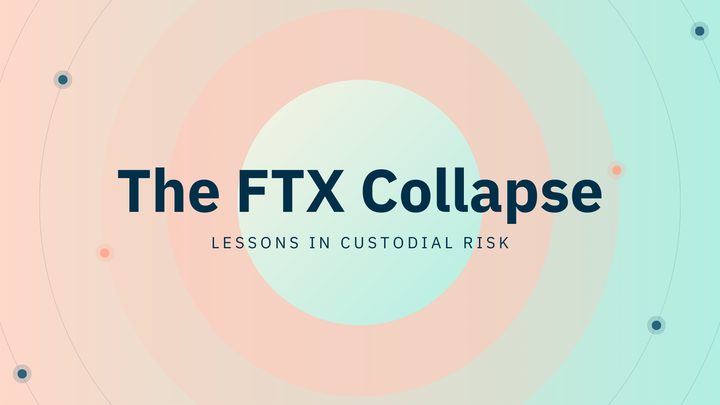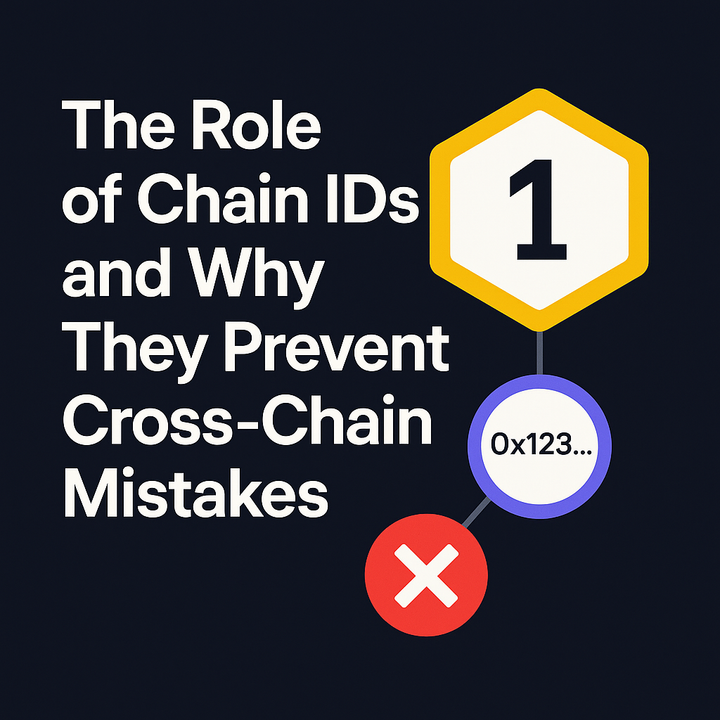Token Price Correlation with Bitcoin and Ethereum Dominance
The cryptocurrency market is a wild ride, a digital frontier where fortunes are made and lost in the blink of an eye. At the heart of this volatile ecosystem are Bitcoin and Ethereum, the two giants that often dictate the market’s rhythm. If you’ve ever watched altcoin prices surge or crash seemingly out of nowhere, you might have wondered:
why do so many tokens move in lockstep with Bitcoin and Ethereum? The answer lies in a concept called market dominance, and the intricate dance of correlation that binds the crypto market together. In this article, we’ll unpack how Bitcoin and Ethereum’s dominance influences token prices, why it happens, and what it means for investors and traders navigating this space.
Understanding Market Dominance
To get the lay of the land, let’s start with what “market dominance” actually means. In crypto, dominance refers to the percentage of the total market capitalization of all cryptocurrencies that a single coin like Bitcoin or Ethereum represents. For instance, if the total crypto market cap is $2 trillion and Bitcoin’s market cap is $1 trillion, Bitcoin’s dominance is 50%. It’s a simple metric, but it carries massive weight.
Bitcoin, as the first cryptocurrency, has long been the market’s bellwether. Its dominance often hovers between 40% and 60%, though it’s spiked as high as 70% during bear markets and dipped below 40% during altcoin bull runs. Ethereum, the second-largest crypto by market cap, typically commands 15-20% of the market. Together, these two heavyweights set the tone for the entire crypto landscape.
Why does this matter? Because when Bitcoin or Ethereum moves, the market listens. A surge in Bitcoin’s price often lifts smaller altcoins, while a sharp drop can drag the entire market down with it.
This phenomenon, known as price correlation, is a key driver of token price movements.
But what’s behind this interconnectedness, and how does it play out?
The Mechanics of Price Correlation
Price correlation measures how closely the price of one asset moves in relation to another. In crypto, most altcoins are highly correlated with Bitcoin, and to a lesser extent, Ethereum. This means that when Bitcoin’s price rises, altcoins tend to follow suit, and when it falls, they often take a hit too. Ethereum, while influential, tends to have a stronger correlation with altcoins tied to its ecosystem, like ERC-20 tokens or DeFi projects.
The correlation isn’t perfect, and it’s not always one-to-one. Some tokens, like stablecoins pegged to fiat currencies, are designed to resist market swings. Others, like privacy coins or niche project tokens, may march to their own beat during specific market conditions. But for the most part, Bitcoin and Ethereum act like the sun and moon in the crypto solar system everything else orbits around them.
Data backs this up. Historical analysis from platforms like CoinMarketCap and CoinGecko shows that during bull markets, Bitcoin’s correlation with top altcoins like Cardano, Solana, and Polkadot often exceeds 0.8 (on a scale where 1 is perfect correlation and 0 is no correlation). Ethereum’s correlation with these same altcoins is typically slightly lower, around 0.6 to 0.8, but still significant. During bear markets, these correlations can tighten even further as fear drives investors to follow Bitcoin’s lead.
Why Are Token Prices So Correlated?
So, why do altcoins shadow Bitcoin and Ethereum so closely? There are a few key reasons, and they’re rooted in both market psychology and structural realities.
1. Bitcoin as the Market’s Anchor
Bitcoin isn’t just the biggest cryptocurrency—it’s the gateway to the crypto world. Most trading pairs on exchanges are denominated in Bitcoin (BTC) or Ethereum (ETH), meaning you often need to buy Bitcoin or Ethereum to trade for altcoins. When Bitcoin’s price spikes, it increases the value of BTC-based trading pairs, giving traders more purchasing power to scoop up altcoins. This creates a ripple effect, pushing altcoin prices up. Conversely, when Bitcoin tanks, the value of those trading pairs shrinks, and altcoin prices often follow.
This dynamic is amplified by market sentiment. Bitcoin is the crypto market’s poster child, and its price movements are a barometer for investor confidence. When Bitcoin rallies, it signals optimism, encouraging traders to pour money into riskier altcoins. When it crashes, fear takes over, and investors flee to safer assets (like stablecoins) or exit the market entirely, dragging altcoin prices down.
2. Ethereum’s Ecosystem Influence
Ethereum’s dominance stems from its role as the backbone of decentralized finance (DeFi), non-fungible tokens (NFTs), and countless other blockchain applications. Thousands of tokens are built on Ethereum’s blockchain, and their prices are often tied to Ethereum’s performance. For example, a surge in ETH’s price can boost the value of DeFi tokens like Uniswap (UNI) or Chainlink (LINK) because they rely on Ethereum’s network for transactions. If Ethereum’s gas fees spike or its network faces congestion, these tokens can suffer, too.
Ethereum’s upgrades, like the shift to proof-of-stake with the Merge in 2022, also play a role. Positive developments in Ethereum’s ecosystem—like faster transaction speeds or lower fees—can spark rallies in ETH and its associated tokens, while setbacks can dampen enthusiasm.
3. Market Psychology and Herd Behavior
Crypto is a speculative market, and human psychology plays a massive role. When Bitcoin or Ethereum surges, it creates a Fear of Missing Out (FOMO) effect, prompting traders to jump into altcoins in hopes of catching the next big wave. Similarly, during downturns, panic selling spreads like wildfire, and altcoins often bear the brunt of the sell-off. This herd behavior reinforces the correlation between Bitcoin, Ethereum, and the broader market.
Posts on platforms like X can amplify these effects. A single tweet from a high-profile figure say, a tech billionaire hyping Bitcoin can send prices soaring across the board. Conversely, negative news, like a rumored regulatory crackdown, can trigger a market-wide sell-off. The crypto market’s relatively small size compared to traditional finance makes it especially sensitive to these sentiment-driven swings.
4. Liquidity and Market Structure
The crypto market’s structure also fuels correlation. Many altcoins have lower liquidity than Bitcoin or Ethereum, meaning they’re more susceptible to sharp price swings when large players (aka “whales”) move in or out. Since Bitcoin and Ethereum dominate trading volume, their movements set the pace for liquidity flows across the market. When Bitcoin rallies, liquidity floods into altcoins, pushing their prices up. When it crashes, liquidity dries up, and altcoins often take a bigger hit due to their thinner order books.
The Altcoin Season Phenomenon
While correlation is the norm, there are times when altcoins break away from Bitcoin and Ethereum’s grip a period traders call “altcoin season.” This typically happens during bull markets when Bitcoin’s dominance peaks and then starts to decline. As Bitcoin’s gains slow, investors rotate their profits into altcoins, hoping for higher returns from smaller, riskier projects.
During altcoin seasons, correlations weaken, and some tokens can skyrocket independently of Bitcoin or Ethereum. For example, in early 2021, tokens like Solana (SOL) and Polygon (MATIC) posted triple-digit gains while Bitcoin’s growth slowed. These periods are exciting for altcoin investors but rare and unpredictable. They’re often driven by specific catalysts, like a new DeFi protocol launch or an NFT boom, that shift attention to particular tokens.
However, altcoin seasons don’t last forever. When Bitcoin’s dominance reasserts itself often during a market correction correlations snap back, and altcoins can crash harder than Bitcoin or Ethereum due to their higher volatility.
Case Studies: Correlation in Action
Let’s look at a couple of real-world examples to see how this plays out.
Case Study 1: The 2021 Bull Run
In late 2020 and early 2021, Bitcoin surged from $10,000 to nearly $69,000, fueled by institutional adoption and retail FOMO. Altcoins followed suit, with Ethereum climbing from $400 to over $4,000 and smaller tokens like Cardano and Binance Coin posting massive gains. Data from CoinGecko shows that during this period, Bitcoin’s correlation with top altcoins like ADA and BNB was above 0.85. Ethereum’s ecosystem tokens, like AAVE and UNI, were even more tightly correlated with ETH, often exceeding 0.9.
The rally wasn’t just about Bitcoin’s price—it was about market sentiment. As Bitcoin broke new highs, mainstream media coverage exploded, drawing in new investors who spread their bets across altcoins. Ethereum’s DeFi and NFT boom added fuel to the fire, boosting tokens tied to its network. But when Bitcoin peaked and corrected in mid-2021, altcoins followed, with many losing 50% or more of their value in weeks.
Case Study 2: The 2022 Bear Market
Fast forward to 2022, and the picture flipped. Bitcoin crashed from its all-time high to below $20,000, triggered by macroeconomic factors like rising interest rates and inflation fears. Altcoins got hit even harder—Ethereum dropped to around $1,000, and smaller tokens like Solana and Avalanche lost 80-90% of their value. Correlations tightened, with most altcoins moving in near-perfect sync with Bitcoin as fear gripped the market.
This bear market highlighted how Bitcoin’s dominance spikes during downturns. As investors fled to safer assets, Bitcoin’s dominance climbed from 40% to nearly 50%, while altcoins struggled to find buyers. Ethereum’s ecosystem wasn’t spared either, as high gas fees and a slowdown in DeFi activity weighed on its tokens.
What This Means for Investors
Understanding the correlation between token prices and Bitcoin/Ethereum dominance is crucial for anyone navigating the crypto market. Here are a few takeaways:
1. Diversification Isn’t Always What It Seems
In traditional finance, diversification reduces risk by spreading investments across uncorrelated assets. In crypto, high correlations mean that holding a mix of Bitcoin, Ethereum, and altcoins doesn’t always provide the same protection. During a market crash, most tokens move together, so diversification within crypto may not shield you from losses.
2. Watch Bitcoin’s Dominance
Bitcoin’s dominance is a key indicator of market trends. When it’s rising, it’s often a sign of caution, as investors are sticking to the “safer” crypto. When it’s falling, it could signal an altcoin season, where riskier bets might pay off. Keeping an eye on dominance charts on platforms like TradingView can help you time your trades.
3. Ethereum’s Ecosystem Matters
If you’re investing in altcoins, pay attention to Ethereum’s performance and ecosystem developments. Tokens built on Ethereum are especially sensitive to its price movements and network upgrades. A new DeFi protocol or a successful Ethereum scaling solution could spark a rally in related tokens.
4. Sentiment Drives the Market
Crypto is as much about psychology as it is about fundamentals. Platforms like X are a goldmine for gauging sentiment—trending hashtags, influential accounts, and breaking news can all move prices. Staying plugged into the community can give you a heads-up on potential catalysts.
5. Risk Management Is Key
Given the high correlation and volatility, risk management is non-negotiable. Setting stop-loss orders, avoiding over-leveraged trades, and keeping a portion of your portfolio in stablecoins can help you weather market swings.
The Future of Correlation
Will token prices always be tethered to Bitcoin and Ethereum? Probably not forever, but it’s likely to persist for the foreseeable future. As the crypto market matures, we might see some altcoins decouple from Bitcoin’s influence, especially those with unique use cases or independent ecosystems. Projects like Solana, Polkadot, or layer-2 solutions could carve out their own niches, reducing their reliance on the big two.
That said, Bitcoin and Ethereum’s dominance is deeply entrenched. Bitcoin remains the crypto market’s gold standard, while Ethereum’s smart contract platform underpins much of the innovation in the space. Until another project can match their liquidity, adoption, and brand recognition, correlations will likely remain strong in web3.
There’s also the question of external factors. Regulatory changes, institutional adoption, and macroeconomic shifts could alter the dynamics of correlation. For instance, if governments crack down on Bitcoin but embrace Ethereum-based DeFi, we could see Ethereum’s influence grow relative to Bitcoin’s. Or, if a new blockchain emerges with game-changing technology, it could disrupt the current hierarchy.
Conclusion
The crypto market is a complex, interconnected web, and Bitcoin and Ethereum are its beating heart. Their dominance shapes token prices through a mix of market mechanics, psychology, and liquidity flows. For traders and investors, understanding this correlation is like reading a map it won’t tell you exactly where the market’s headed, but it’ll help you navigate the terrain.
Whether you’re a seasoned crypto veteran or a newcomer dipping your toes, keep an eye on Bitcoin and Ethereum’s dominance. Watch the charts, follow the sentiment on platforms like X, and always manage your risk. The crypto market is full of opportunities, but it’s also a place where fortunes can vanish as quickly as they appear. By understanding how token prices dance to the tune of Bitcoin and Ethereum, you’ll be better equipped to ride the waves and maybe even catch the next big altcoin season.



Comments ()